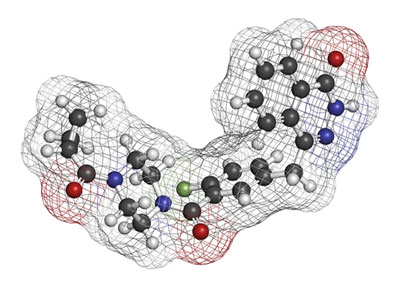Why PARP inhibitors fail: key role of the CST complex in BRCA1-deficient cancers
Posted: 27 June 2025 | Drug Target Review | No comments yet
Researchers from UT Health San Antonio have identified the CST protein complex as a key driver of resistance to PARP inhibitors in BRCA1-deficient cancers – which could lead to more personalised treatments for breast, ovarian and prostate cancer patients.


Scientists at The University of Texas Health Science Center at San Antonio (UT Health San Antonio), in collaboration with Dana-Farber Cancer Institute at Harvard Medical School, Columbia University and Irving Medical Center, have made a critical breakthrough in understanding why cancers with BRCA1 mutations become resistant to a widely used class of drugs known as PARP inhibitors – pharmacological inhibitors of poly ADP ribose polymerase (PARP), which plays a role in repairing DNA in damaged cells.
The findings, published in Science, identify the CST complex – a trio of proteins involved in DNA repair – as a key factor behind the failure of PARP inhibitors in breast, ovarian and prostate cancers.
“Of all the things we have done, this one has the most impact on clinical practice over the long run,” said Patrick Sung, DPhil, director of the Greehey Children’s Cancer Research Institute and associate dean for research at the Joe R. and Teresa Lozano Long School of Medicine at UT Health San Antonio. “Everyone expects malfunction in these proteins to give rise to drug resistance, but they do not know why and how.”
The role of BRCA mutations and PARP inhibitors
Roughly 1 in 300 Americans carries a mutation in the BRCA1 or BRCA2 gene, which helps repair damaged DNA. These mutations elevate the risk of several cancers, particularly breast, prostate and ovarian cancer.
Patients with BRCA-mutant cancers often receive PARP inhibitors, which block cancer cells from repairing their DNA. This essentially weaponises the cancer’s own weakness. While these drugs can lead to prolonged tumour regression, resistance eventually develops in nearly all cases.
“This seminal discovery opens the door to understanding how some breast, prostate and ovarian cancers become resistant to an important class of cancer drugs called the PARP inhibitors,” said Robert Hromas, MD, FACP, dean of the Joe R. and Teresa Lozano Long School of Medicine. “These drugs can generate tumour regressions lasting years, but ultimately almost everyone relapses due to resistance.”
The CST complex: a hidden player in resistance
The research identifies the CST complex – composed of three proteins – as a central mechanism in this resistance. Normally, the CST complex helps cells manage DNA damage by inhibiting one repair pathway and forcing the cell to use another. When the complex is functioning properly, PARP inhibitors are effective because BRCA1-deficient cells cannot adequately repair DNA damage and die.
When the CST complex is mutated or silenced, cancer cells regain the ability to repair DNA. This allows them to survive and proliferate despite PARP inhibitor treatment.
However, when the CST complex is mutated or silenced, cancer cells regain the ability to repair DNA. This allows them to survive and proliferate despite PARP inhibitor treatment.
“This is a crucial first step to providing an intellectual framework to understanding why defects in this particular complex, and other proteins associated with this complex, can lead to cancer-drug resistance,” Sung explained. “This will also form the basis of finding compounds that interfere with protein function or enhance the stability of DNA-bound protein complexes to boost the therapeutic efficacy of PARP inhibitors and other cancer drugs.”
Toward more personalised and effective cancer care
The discovery provides a promising path toward new therapies that could prevent or overcome resistance to PARP inhibitors. By better understanding the molecular players in DNA repair, scientists hope to develop targeted treatments that are more durable and personalised.
The team’s work marks a big step toward retooling cancer therapy for patients with BRCA-related tumours. As researchers delve deeper into the role of the CST complex and its connections to DNA repair, future drug development may yield next-generation therapies that preserve the benefits of existing cancer treatments.
This advancement not only solves a long-standing puzzle in oncology but also equips clinicians and researchers with new tools to refine treatment strategies for patients navigating BRCA-related cancers.
Related topics
Cancer research, DNA, Drug Discovery, Drug Discovery Processes, Drug Targets, Molecular Biology, Oncology, Precision Medicine, Therapeutics, Translational Science
Related conditions
Breast cancer, Ovarian cancer, Prostate cancer








